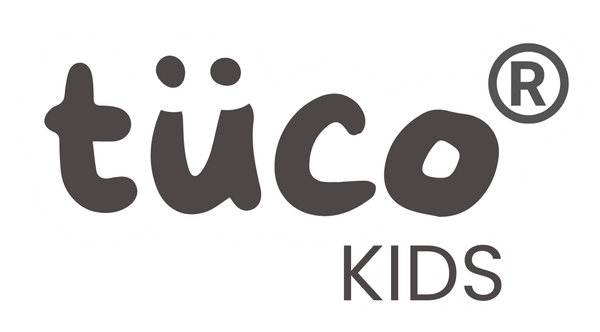
Craft Ideas for Kids: Creative Ways to Build Skills Through Play
In a world filled with screens, structured classes, and tight schedules, there’s something magical about sitting down with glue, paper, and a handful of colors. Craft time might look like messy fun from the outside, but beneath the glitter and paint is a powerful tool for learning. It teaches children patience, problem-solving, motor skills, and creative expression — all while giving them a much-needed break from daily school routines.
For parents, crafting can feel like “extra work” — another mess to clean or activity to plan. But in reality, it’s one of the most meaningful ways to connect with your child. More importantly, it provides a safe space for kids to explore ideas, make mistakes, and express emotions in ways words sometimes can’t. Over time, these small creative moments shape confidence, resilience, and a deeper sense of curiosity.
Here are eight age-appropriate craft ideas that are fun, skill-building, and easy to do at home.
1. Paper Plate Animals
Age: 3–6 years
Skills Built: Fine motor skills, creativity, and hand-eye coordination

Give kids plain paper plates, colored paper, glue, and crayons. Help them transform the plates into animals — lions with yarn manes, elephants with paper trunks, or owls with button eyes. This simple craft introduces shapes, textures, and basic design while strengthening small muscles used for writing.
2. Nature Collage Art
Age: 4–8 years
Skills Built: Observation, environmental awareness, creative thinking

Take kids on a nature walk and collect leaves, flowers, twigs, or pebbles. Back home, they can glue these onto cardboard to create beautiful collages. This not only sparks creativity but also builds an appreciation for nature and helps children learn about different textures and materials.
3. DIY Story Stones
Age: 5–9 years
Skills Built: Storytelling, sequencing, language development

Collect small pebbles and let children paint them with simple images — a sun, a tree, a cat, a house. Once dry, they can use the stones to build stories in sequence. This activity strengthens language skills, narrative building, and imagination.
4. Handprint Art Keepsakes
Age: 2–5 years
Skills Built: Sensory development, emotional expression

Dip little hands in non-toxic paint and press them onto paper to create flowers, animals, or seasonal themes. This activity is perfect for toddlers exploring textures and sensations. It’s also a beautiful way to make keepsakes parents will cherish forever.
5. Recycled Craft Robots
Age: 6–10 years
Skills Built: Engineering thinking, problem-solving, sustainability awareness

Use cardboard boxes, bottle caps, and old containers to build “robots” or futuristic inventions. This project teaches kids about recycling and sustainability while encouraging them to design and build 3D structures.
6. Homemade Greeting Cards
Age: 5–12 years
Skills Built: Empathy, creativity, emotional intelligence

Provide cardstock, markers, stickers, and stamps, and let kids create greeting cards for family and friends. Designing messages and decorations helps children express feelings and understand the joy of giving.
7. Yarn and Bead Bracelets
Age: 7–12 years
Skills Built: Fine motor control, focus, patience

Threading beads onto yarn or string to make friendship bracelets is more than a craft — it’s a mindfulness exercise. Kids learn patience and focus while strengthening the small muscles needed for writing and coordination.
8. Festive Paper Lanterns
Age: 6–12 years
Skills Built: Precision, planning, creativity

Folding and cutting colored paper to create lanterns introduces children to geometric thinking and spatial awareness. Decorating them with paint or glitter enhances creativity and provides a festive, decorative touch for any celebration.
Why Craft Time Is More Important Than We Realize
Craft activities are not just “time-pass.” They provide a break from academic pressure, giving children space to relax and recharge. The repetitive, hands-on motions help lower stress levels, while the freedom to explore ideas builds emotional resilience and self-esteem.
Moreover, crafting encourages a “growth mindset.” When a project doesn’t go as planned, kids learn to try again, adapt, and think creatively — vital life skills that go beyond the craft table. And when parents join in, it becomes more than an activity — it’s quality bonding time filled with conversation, laughter, and shared achievement.
A Healthy Routine After Craft Play
All those paints, glues, glitters, and markers can leave little hands and faces messy — and sometimes even irritated. That’s why proper post-craft care is just as important as the activity itself. Gentle skincare routines designed for kids, including pH-balanced cleansers and mild bathing bars, help wash away residue without stripping moisture. Following up with a hydrating lotion ensures their skin stays soft and nourished.
It’s also important to teach children about hair care after messy play. A mild shampoo followed by a gentle detangler helps remove glitter or paint while keeping hair smooth and healthy. These simple hygiene habits not only protect their delicate skin and hair but also teach lifelong self-care practices.
Craft ideas for kids are far more than creative distractions — they are powerful tools for learning, emotional growth, and connection. From problem-solving and language development to fine motor skills and creativity, every glue stick and crayon stroke is building a foundation for future success. Through hands-on activities like painting and sculpting, children explore shapes and patterns for kids, enhancing their visual-spatial skills and understanding of geometry. These experiences not only foster artistic expression but also encourage critical thinking as they experiment with colors and textures. Ultimately, engaging in crafts equips kids with the confidence to express themselves and solve problems creatively.

